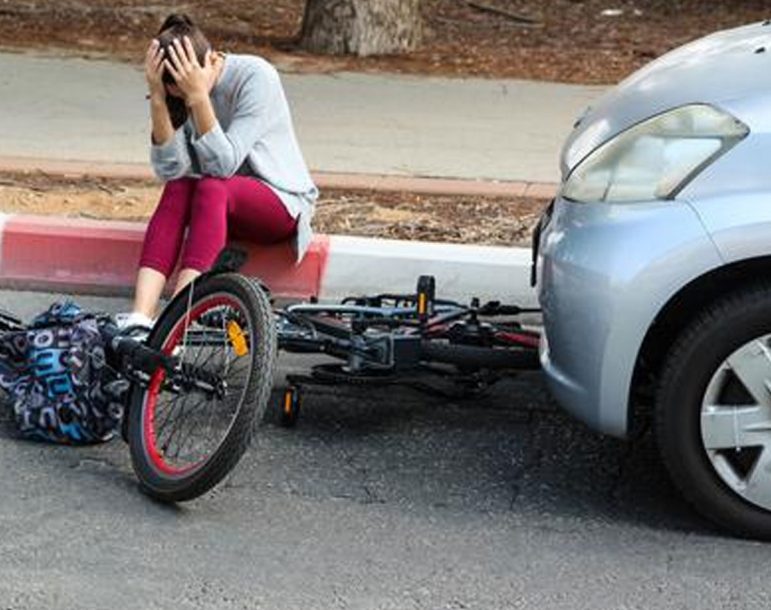IMPACTS AND INJURIES
In the event of an accident, motorcycle drivers have a significantly higher risk of life-threatening injuries or fatal injuries than drivers and passengers of cars, trucks, and SUVs. Motorcyclists are in a very vulnerable position when an accident occurs because motorcycles are not provided with safety devices such as side and front airbags, seat belts, windshields, and most importantly a steel frame. Because of this, motorcyclists are more susceptible to serious brain injuries and comas. In Texas, helmets are only required for drivers and passengers under the age of 21.
After an accident, motorcycle drivers can suffer catastrophic injuries, including severe head trauma, spinal cord injuries, painful burns, broken or fractured bones, crushed organs, internal bleeding, and nerve damage. These injuries can be permanent in nature and have a significant impact on the quality of life of the injured driver and his family. Considering that the average age for most fatal motorcycle accidents is 30, many of the riders have families and permanent damage or death can have a significant impact on the remaining family members. Even if the driver survives, future medical expenses, loss of work capacity and other factors significantly affect the driver’s ability to support his family financially and can become a financial burden with the amount of medical care needed because of the injuries.
NATIONAL MOTORCYCLE STATISTICS
According to the National Road Safety Administration (NHTSA), fatal motorcycle accidents have tripled from 2003 to 2013 and the average age of drivers who died in accidents increased from 38 years in 2003 to 42 years in 2013. According to the 2017 NHTSA publication Fatal Two-Vehicle Motorcycle Crashes, 71% of accidents occur between May and October and of all deaths caused by these accidents, 98.5% of those deaths included the motorcycle driver or the motorcycle passenger.
SECURITY OF MOTORCYCLES IN TEXAS
Texas laws require all motorcycle, motor scooter and moped operators, and their passengers, to wear helmets meeting the Federal Motor Vehicle Safety Standard #218 (FMVSS #218). But, there is one exception. Individuals at least 21 years-old are exempt from wearing a helmet while operating or riding a motorcycle if they have completed a Department-approved Motorcycle Operator Training Course or they can provide proof of at least $10,000 in medical insurance coverage.
DEFINITION OF MOTORCYCLE
According to Texas Law, “Motorcycle” means any motor vehicle that has a seat or chair for driver use and designed to travel on no more than three wheels in contact with the ground, but excluding tractors and Mopeds, The term also includes 3-wheel tricycles with closed cabins.
Therefore, motorcycles, tricycles, and inverted tricycles are included in the definition of a motorcycle by Texas law.
THE INVERTED TRIKE
It’s more than a motorcycle but less than a car. The motorized tricycle – called “autocycle” – has two rear and one front wheel. It also has a steering wheel, pedals and there are models with a closed body for the comfort of the driver and sometimes a passenger. It can be described as a two-seat convertible or as an “adult kart,” in which one can travel with a passenger on roads and routes at normal speeds.
Some ‘autocycles’ are designed for fun, others to optimize fuel efficiency. Their prices range between 6,800 and 65,000 dollars. Due to its hybrid and novel nature, state governments have problems regulating it, as well as its drivers.
Manufacturers like Polaris Industries, maker of the Slingshot, have lobbied state governments for years to legalize these vehicles and separate them from motorcycles so that users can acquire them without having to know how to drive a two-wheeler.
Many states have given their approval to the new machines, but others have not. Some require that they are equipped with safety belts, airbags, and bumpers. Others require that the driver always wear a helmet, although this depends on the age of the driver and whether they have a closed cabin or not.
Polaris’ three-wheel Slingshot ended up in legal limbo in 2014 after it was determined that it didn’t fit the letter of any of Texas’ motor vehicle laws. It didn’t have the safety equipment required to define it as a car, but since it had seats and not a saddle, it couldn’t be considered a motorcycle, either.
That changed in mid- 2015 when Governor Greg Abbot signed an amendment to the law that essentially removed the saddle requirement, allowing three-wheel “autocycles” to be registered as motorcycles, as they are in many states. A motorcycle license is still required to drive one, but you can take the test in a three-wheeler if you only plan to drive that type of vehicle.
INJURED IN A MOTORCYCLE ACCIDENT?
If you or a loved one has been injured in a motorcycle accident in Texas, the law is on your side. If you can prove that the other driver’s negligent actions led to your accident, you may be entitled to compensation for your pain and suffering, emotional distress, loss of wages, lost wages in the future, medical expenses, rehabilitation expenses and the general quality of life diminished.
Our attorneys have successfully handled motorcycle cases and have experience in dealing with the damages most motorcyclists sustain in these types of accidents. We commit to exhausting all possible avenues to try and prove that the other party is at fault and to help you and your family get the compensation you deserve.
If you or a loved one has been injured in a motorcycle accident, contact our Motorcycle Accident Lawyers at P&M Law today at 832-844-6428 or text our attorneys directly at 832-438-3012.

